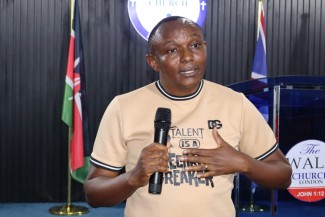STANDING IN THE GAP: MY TESTIMONY ON SUICIDE PREVENTION.

STANDING IN THE GAP: MY TESTIMONY ON SUICIDE PREVENTION.
Over the years of walking with teenagers and young people, I have come face to face with the silent battles they fight every day. Behind bright smiles and youthful energy, many are carrying heavy loads of depression, rejection, and hopelessness. Some have even confessed that they had thought of ending their lives.
By God’s grace, I have been privileged to stand in the gap — and I have witnessed how compassion, open conversations, and safe spaces can literally save lives.
The Power of Speaking Compassionately
I have learned that silence around suicide only deepens the wound. When we dare to speak about it openly, without shame or condemnation, something shifts.
I remember one teenage girl who stayed behind after a school talk. She was quiet during the session, but when everyone left, she approached me with tears in her eyes. She whispered, “I had already planned to end my life next week.” We sat together for almost an hour — no preaching, no pressure, just me listening and reminding her she was valuable and loved. That one conversation changed her decision. Months later, she told me, “That day saved my life.”
Time and again, I’ve seen that a compassionate word can be the bridge between despair and hope.
Drugs, Substance Abuse, and Suicide
Many young people I’ve encountered turned to drugs to escape their pain. One young man, only 19, shared that drugs became his “comfort” after his parents separated. He told me, “At least when I’m high, I don’t feel the pain.” But soon he became addicted, dropped out of school, and confessed he sometimes thought ending his life was the only way out.
Through mentorship, consistent follow-up, and connecting him with a recovery group, he slowly began to heal. Today, he is not only drug-free but also helping other youths fight addiction. His story reminds me that addiction and suicide are often intertwined — and both can be overcome with love, support, and accountability.
The Weight of Dysfunctional Families
So many of these struggles trace back to broken or dysfunctional homes. One boy I mentored grew up in a house filled with constant fighting. His father was absent most of the time, and his mother struggled with alcohol. He told me, “I don’t think anyone would notice if I died.”
Those words broke my heart. I chose to walk closely with him, reminding him he was seen, known, and valued. Over time, with consistent mentorship, he discovered talents in music and poetry. Today, he uses his art to inspire others. That young man went from wanting to die to becoming a voice of hope.
Creating Safe Spaces
One of the most powerful lessons I’ve learned is that young people thrive in safe spaces.
I recall hosting a small circle of teens where we encouraged honesty without judgment. At first, they were reluctant. But when one brave girl shared about her struggles with depression, others opened up too. The room that started in silence ended in hugs, tears, and laughter. Many said, “This is the first time I feel free to say what I really feel.”
Safe spaces allow young people to breathe again. They provide a place where masks fall and healing begins.
Why I Will Keep Standing in the Gap
Every time I see a young person who once thought of suicide now smiling, leading, or mentoring others, I am reminded why I do this. Every time a young person puts down drugs and picks up hope, I know the fight is worth it.
This is not just work to me — it is a calling. I will keep standing in the gap, speaking life where there is despair, building bridges where there are broken homes, and creating spaces where young people can discover purpose.
Because every life matters.
Because every soul has destiny.
Because hope is always stronger than despair.
BY PETER CHEGE KARIUKI | MR. TALENT.
+254742198985 | +254739700411